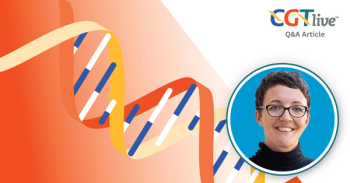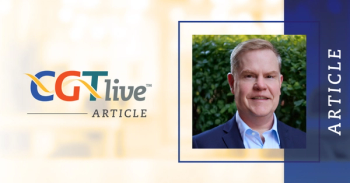
Safe Handling Guidelines Needed for Gene Therapies in the Clinic
Current handling guidelines do not align between the laboratory and clinical settings.
The
A poster detailing the need for such guidelines was presented at
“The current guidance for grading the risk of viral vectors in the laboratory setting, the NIH risk categories and CDC biosafety levels, doesn't translate to the risk categorizations that we use in the clinical setting, which is the NIOSH list of hazardous drugs and USP 800," Zinchuk told CGTLive® during the ASGCT meeting. “As more and more gene therapies move from the lab setting into human clinical trials and are being used in large academic medical centers around the country and around the world, we need to better define our processes for safe handling practices in the institutional setting.”
The researchers outlined current guidelines used in different settings. Currently used to guide handling in laboratory settings are the National Institutes of Health (NIH) risk categories and the Center for Disease Control (CDC) Biological Safety Level, both of which grade agents according to pathogenicity, transmission, and treatability of the agent.
READ MORE:
On the other hand, currently in clinical settings, the NIOSH list of Hazardous Drugs and USP <800> set the standard for handling drugs. These criteria characterize drugs according to carcinogenicity, teratogenicity/developmental toxicity, reproductive toxicity, organ toxicity at low doses, genotoxicity, or new drugs that mimic existing hazardous drugs in structure or toxicity.
“With an increasing volume of viral vector-based gene therapies on the horizon, ensuring the safety and protection of healthcare workers handling these agents is of the utmost importance. Staff who prepare and administer these agents, as well as those caring for patients, must be considered, as occupational health, quality and safety administrators develop safe handling policies and procedures at their institutions,” Zinchuk and colleagues wrote.
As existing guidelines in the lab and clinical settings do not align, there is a need to develop standard operating procedures for the clinical setting that draw from existing guidelines. New guidelines must consider the roles and responsibilities of personnel; staff training; personal protection equipment; types of exposure; receipt, storage, and preparation of gene therapy agents; labeling packaging, transportation, and waste disposal; administration; spill control, and other factors.
“Institutions must build a team led by pharmacy to address the creation of policies and procedures to manage the safe handling of gene therapies in clinical settings. In addition to pharmacy, this team should include representatives from the institutional biosafety committee, infection control, facilities, nursing, and medicine,” Zinchuck and colleagues wrote in their poster. “Pharmacists must become institutional leaders in the oversight of gene therapy use as they are an integral component in every stepof the medication use process for these novel therapeutics. Mechanisms for this newly established team to address include policy and procedure creation, staff education, and regulatory compliance. “
REFERENCE
Rodriguez E, Zinchuk K, Stackhouse JR, et al. Recommendations for the safe handling of gene therapy in institutional settings. Presented at: ASGCT 27th Annual Meeting, May 7-10; Baltimore, Maryland. Abstract #924
Newsletter
Stay at the forefront of cutting-edge science with CGT—your direct line to expert insights, breakthrough data, and real-time coverage of the latest advancements in cell and gene therapy.

























